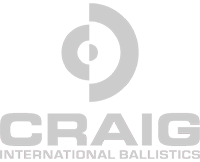GLOSSARY OF BODY ARMOUR TERMS
Glossary of Terms used in the Body Armour Industry
A | B | C | D | E | F | G | H | I | J | K | L | M | N | O | P | R | S | T | U | V | | W | X | Y | Z |
| AP | Armour Piercing |
| ARAMID | Known commercially as Kevlar® Technora® or Twaron. A manufactured fibre that exhibits high strength and high modulus. |
| AREAL DENSITY | The weight of the armoured panel in grams per square metre divided by the protection area of the panel. It gives an indication of the energy absorption capability of the material. |
| BACK FACE DEFORMATION | The term used to describe the effect of a non penetrating projectile on the rear face of a strike plate. The extent of allowable deformation is set by the National Institute of Justice in its Standards at 44mm. |
| BLUNT TRAUMA | This is the injury caused to the body by back face deformation. It can vary from bruising to the destruction of major organs. |
| BRV | Bullet resistant vest. |
| BULLET PROOF | All body armour manufacturers strive to achieve a bullet proof vest. For a variety of reasons this is not possible. Any armour product will normally be described as ‘bullet resistant’ because many factors are involved which the manufacturer cannot control. |
| CALIBER | The diameter of the bore of a weapon. |
| CARRIER | The fabric garment used to carry body armour. |
| CERAMIC PLATE | Hard armour is normally made up of a composite of an extremely hard plate often ceramic and a fibre covering. The ceramic plates as they are often referred to are made from alumina oxide; silicon carbide or boron carbide. These tiles can be very light; strong and often expensive. |
| COMPOSITE | A composite describes the practice of combining a variety of materials to achieve the lightest weight; with the greatest capability. |
| COVERT ARMOUR | This is armour which is worn under normal clothing or normal clothing which has been modified to carry the soft armour material. |
| DENIER | A system for coding filament yarns and fibres; with low numbers representing finer sizes and higher numbers representing heavier yarns. Denier represents the weight in grams of 9000 meters of fibre. |
| DYNEEMA® | A high modulus polyethylene fibre similar to Spectra®. |
| FBI | The United States Federal Bureau of Investigation. |
| FMJ | Full metal Jacket |
| GRAINS | The Imperial System for measuring the weight of bullets. A grain is equivalent to approximately 63.8mg. |
| HARD BODY ARMOUR | Armour which is solid and not flexible. Generally it incorporates steel or ceramics as part of a composite but can be made from treated fibre as well. |
| HPPE | High Performance PolyEthylene |
| JHP | Jacketed Hollow Point |
| JSP | Jacketed Soft Point |
| KEVLAR® | Kevlar® is an aramid fibre developed by DuPont. |
| LRHV | Long Rifle High Velocity |
| LRN | Lead Round Nose |
| MODULUS | This is the measure of stretch or elasticity of a fabric. The number associated with modulus is the amount of load in grams it takes to initiate stretch in a 1000 denier yarn; a higher number reflects lower stretch. |
| MULTIPLE STRIKES | This is the term used to describe a number of projectiles striking a piece of armour. |
| MUSHROOMING | This is one way of describing the appearance of back face deformation. It also describes the deformation of the projectile on penetrating armour. |
| MSC | Mild steel core. |
| NATA | The National Association of Testing Authorities® Australia. |
| NATO | The North Atlantic Treaty Organization. |
| NIJ | The United States National Institute of Justice; whose ballistics testing standards for armour are accepted virtually worldwide. |
| OTV | Outer tactical vest . |
| OVERT ARMOUR | This is armour worn outside normal clothing and is obvious. |
| PARABELLUM 9mm | In 1898 Georg Luger manufactured the first of his famous pistols. It was originally built as a 7.65mm caliber; and was known as the Para Bellum; from the Latin; Si vis pacem para bellum; “If you want peace; prepare for war.” The pistol was modified to 9mm. This ammunition became the most widely used pistol ammunition in the world; and is referred to using the name for the original Luger pistol; Parabellum. |
| PSDB | The United Kingdom Police Scientific Development Branch. This organization conducted extensive research into stabbing’s and developed the Standard for Stab Proof Armour and the test regime. This standard is also used by the National Institute of Justice. |
| RN | Round Nose |
| SAI | Soft armour insert. |
| SAPI | Small arms protective insert. |
| SOFT BODY ARMOUR | This describes armour made from fabric only. It can be a composite containing more than one type of fibre. |
| SPALLING | This is another term describing back face deformation. It refers to the effect of a projectile on armour; where an amount of the material scales off the back face. |
| SPECTRA® | A highly modified polyethylene fibre manufactured by Honeywell. |
| STRIKE PLATE | This is the hard armour insert for body armour. It is sometimes referred to as a [ballistic] tile or a ballistic panel. |
| SWC | Semi-Wadcutter |
| TACTICAL ARMOUR | This is overt armour; which is further developed for extensive use. The carrier is often designed to hold special equipment; in addition to the armour. |
| TECHNORA | An aramid fibre; manufactured by Teijin Ltd. |
| TENSYLON | An Polyethelene fibre; manufactured by and registered trademark of Dupont. |
| TWARON | An aramid fibre manufactured by Teijin Ltd. |
| UD | The abbreviation for uni-directional. This describes the orientation of fibres in a crossply laminate; the fibres are aligned in parallel. |
| V50 | This is a statistical test; originally developed by the US Army. It identifies the velocity at which a projectile has a 50% chance of penetrating the test object. |
| VEST | A vest comprises armour inserts and the carrier. |
Explore the Possibilities
CONTACT US
Craig International Ballistics
+61 7 5563 1099
PO Box 3609 Helensvale Town Centre, Queensland 4212 Australia


